Chapter: Mechanical : Fluid Mechanics And Machinery : Flow Through Circular Conduits
Important Answers and Solved Problems: Fluid Flow Through Circular Conduits
FLOW
THROUGH CIRCULAR CONDUITS
1. Define viscosity (u).
Viscosity
is defined as the property of a fluid which offers resistance to the movement
of one layer of fluid over another adjacent layer of the fluid.Viscosity is also
defined as the shear stress required to produce unit rate of shear strain.
2. Define kinematic viscosity.
Kniematic viscosity is defined as the ratio between the
dynamic viscosity and density of fluid. It is denoted by μ.
3. What is minor energy loss in pipes?
The loss of head or energy due to
friction in a pipe is known as major loss while loss of energy due to change of
velocity of fluid in magnitude or direction is called minor loss of energy.
These include,
a. Loss of
head due to sudden enlargement.
b. Loss of
head due to sudden contraction.
c. Loss of
head at entrance to a pipe.
d. Loss of
head at exit of a pipe.
e. Loss of
head due to an obstruction in a pipe.
f. Loss of
head due to bend in a pipe.
g. Loss of
head in various pipe fittings.
4. What is total energy line?
Total energy line is defined as
the line which gives the sum of pressure head, datum head and kinetic head of a
flowing fluid in a pipe with respect to some reference line. It is also defined
as the line which is obtained by joining the tops of all vertical ordinates
showing sum of the pressure head and kinetic head from the centre of the pipe.
5. What is hydraulic gradient line?
Hydraulic gradient line gives the
sum of (p/w+z) with reference to datum line. Hence hydraulic gradient line is
obtained by subtracting v2 / 2g from total energy line.
6. What is meant by pipes in series?
When pipes of different lengths
and different diameters are connected end to end, pipes are called in series or
compound pipe. The rate of flow through each pipe connected in series is same.
7. What is meant by pipes in parallel?
When the pipes are connected in
parallel, the loss of head in each pipe is same. The rate of flow in main pipe
is equal to the sum of rate of flow in each pipe, connected in parallel.
8. What is boundary layer and boundary layer
theory?
When a solid body immersed in the
flowing fluid, the variation of velocity from zero to free stream velocity in
the direction normal to boundary takes place in a narrow region in the vicinity
of solid boundary. This narrow region of fluid is called boundary layer. The
theory dealing with boundary layer flow is called boundary layer theory.
9. What is turbulent boundary layer?
If the length of the plate is
more then the distance x, the thickness of boundary layer will go on increasing
in the downstream direction. Then laminar boundary becomes unstable and motion
of fluid within it, is disturbed and irregular which leads to a transition from
laminar to turbulent boundary layer.
10. What is boundary layer thickness?
Boundary layer thickness (S) is defined as the distance from
boundary of the solid body measured in y-direction to the point where the
velocity of fluid is approximately equal to 0.99 times the free steam (v)
velocity of fluid.
11. Define displacement thickness
Displacement thickness (S*) is
defined as the distances, measured perpendicular to the boundary of the solid
body, by which the boundary should be displaced to compensate for the reduction
inflow rate on account of boundary layer formation.
12. What is momentum thickness?
Momentum thickness (0) is defined
as the distance, measured perpendicular to the boundary of the solid body, by
which the boundary should be displaced to compensate for the reduction in
momentum of flowing fluid on account of boundary layer formation.
13.Mention the general characteristics of laminar
flow.
•
There is a shear stress between fluid layers
•
‘No slip’
at
the boundary
•
The flow is rotational
•
There is a continuous dissipation of energy due to
viscous shear
14. What is
Hagen poiseuille’s formula ?
P1-P2 / pg
= h f = 32 µ UL / _gD2
The
expression is known as Hagen poiseuille formula .
Where
P1-P2 / _g = Loss of pressure head U = Average velocity
µ
= Coefficient of viscosity D =
Diameter of pipe
L =
Length of pipe
15.What are the factors influencing the frictional
loss in pipe flow ?
Frictional
resistance for the turbulent flow is
i. Proportional to vn where v varies from 1.5 to 2.0 . ii.
Proportional to the density of fluid .
iii. Proportional to the area of surface in contact . iv.
Independent of pressure .
v. Depend on
the nature of the surface in contact .
16. What is
the expression for head loss due to friction in Darcy formula ?
hf = 4fLV2
/ 2gD
Where f =
Coefficient of friction in pipe L =
Length of the pipe
D
= Diameter of pipe V =
velocity of the fluid
17.
What do you understand by the terms
a) major
energy losses , b) minor energy losses Major energy losses : -
This loss due to friction and it is calculated by Darcy weis
bach formula and chezy’s formula .
Minor energy losses :- This is due to
h. Sudden
expansion in pipe .ii. Sudden contraction in pipe . iii. Bend in pipe .iv. Due
to obstruction in pipe .
18. Give an expression for loss of head due to
sudden enlargement of the pipe :
he =
(V1-V2)2 /2g
Wherehe = Loss of head due to sudden enlargement
of pipe . V1 = Velocity of flow at section 1-1
V2 =
Velocity of flow at section 2-2
19.Give an expression for loss of head due to
sudden contraction : hc =0.5 V2/2g
Where hc = Loss of head due to sudden contraction
. V = Velocity at outlet of pipe.
20. Give an expression for loss of head at the
entrance of the pipe hi =0.5V2/2g
where hi
= Loss of head at entrance of pipe .
V =
Velocity of liquid at inlet and outlet of the pipe .
21. What
is sypon ? Where it is used: _
Sypon is along bend pipe which is used to transfer liquid from
a reservoir at a higher elevation to another reservoir at a lower level .
Uses of
sypon : -
1. To carry
water from one reservoir to another reservoir separated by a hill ridge .
2. To empty
a channel not provided with any outlet sluice .
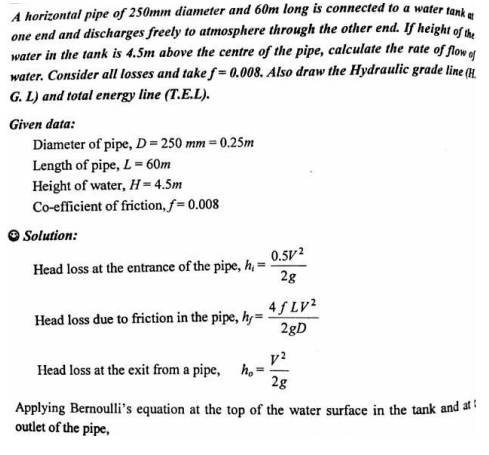

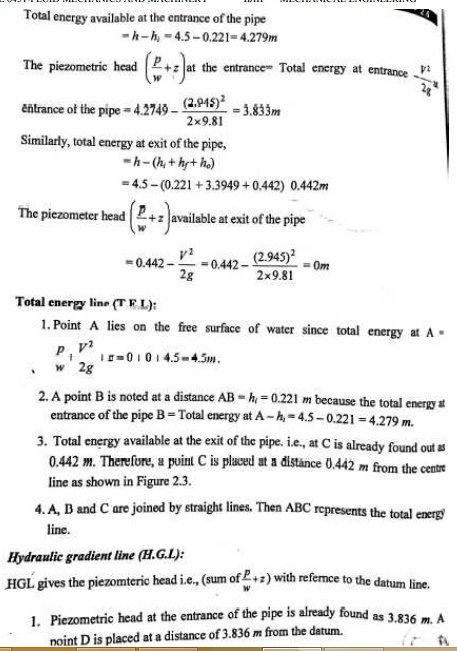
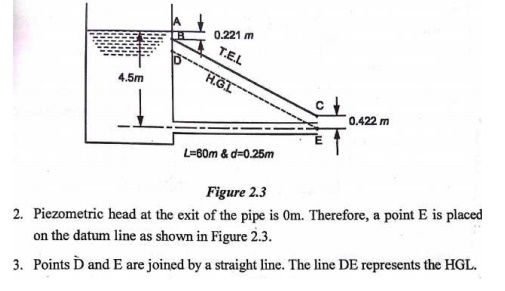
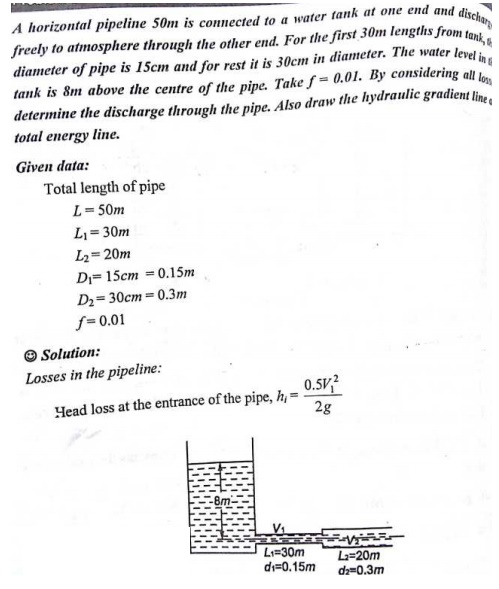
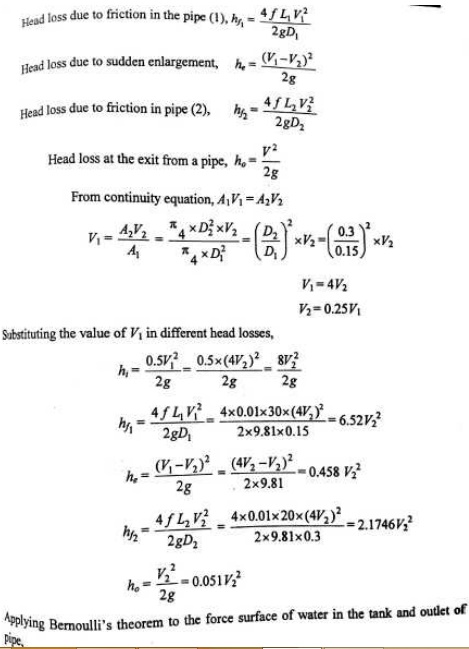
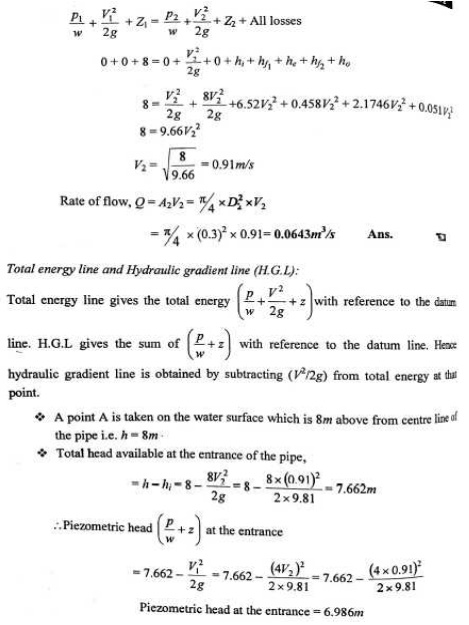
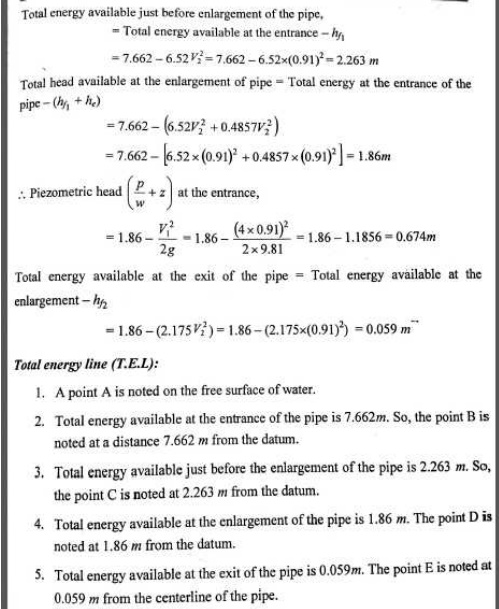
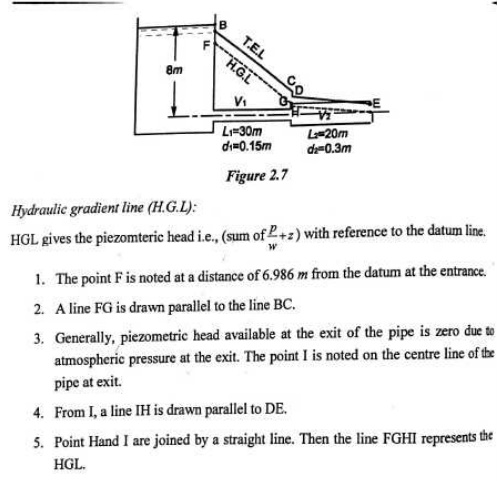

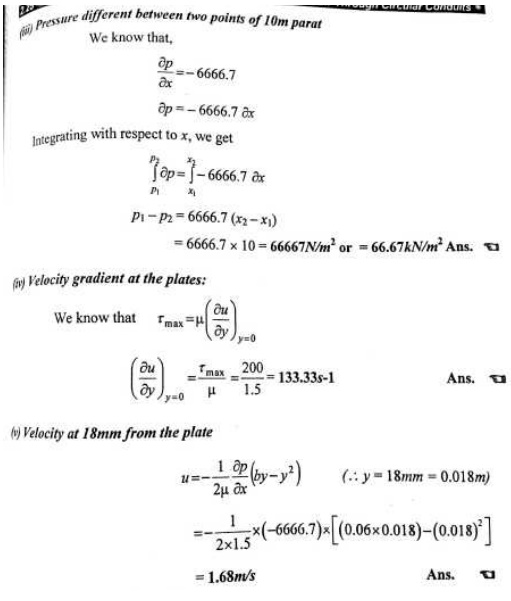

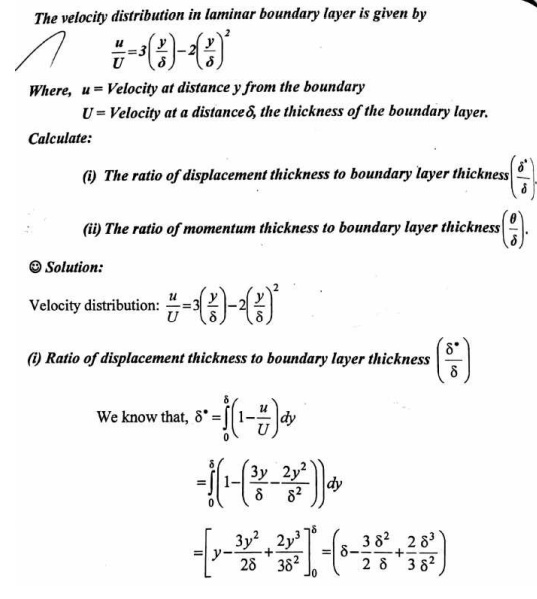
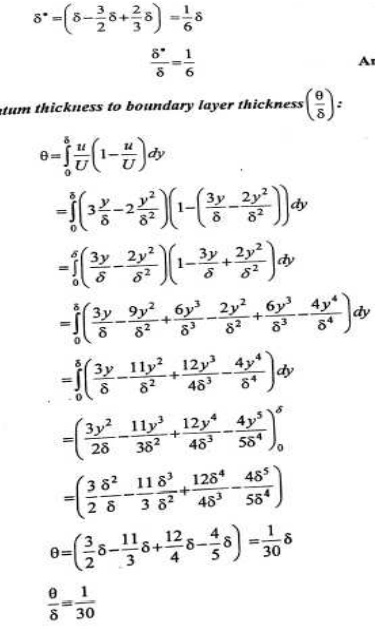
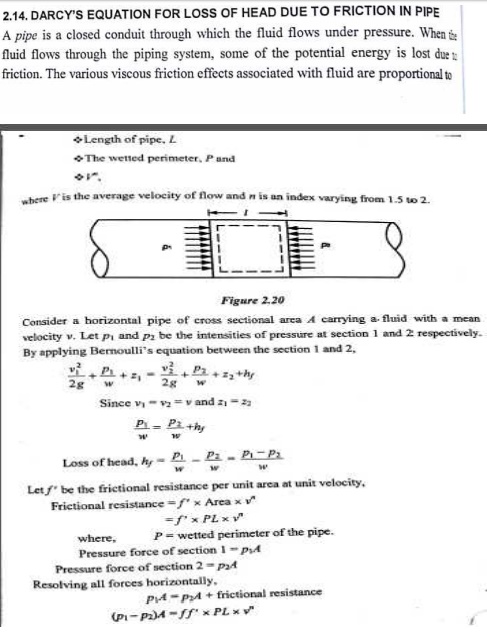
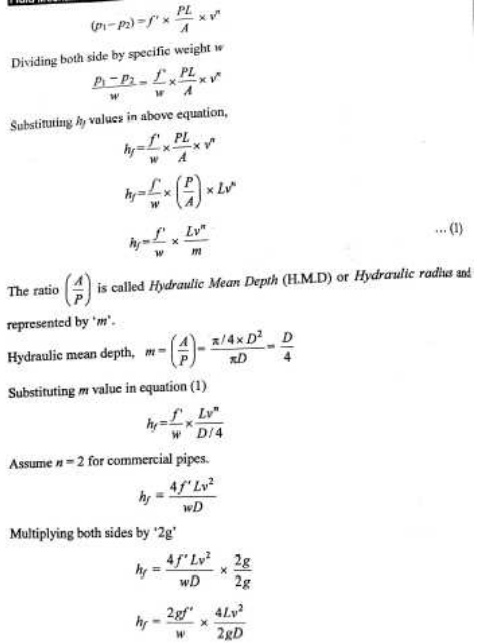
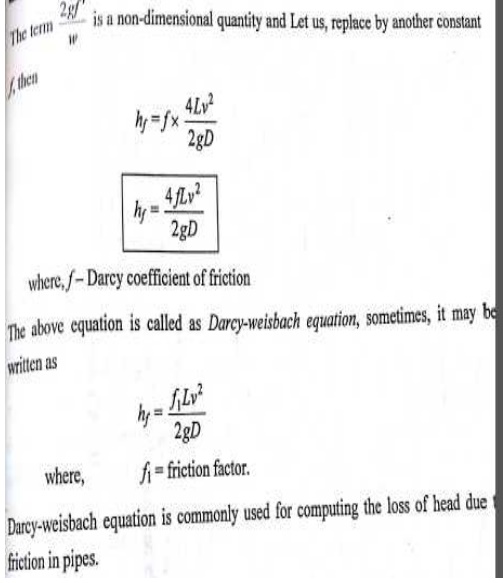
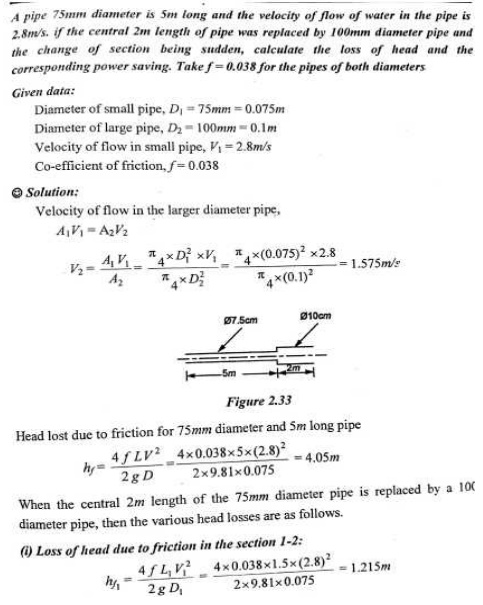
Related Topics